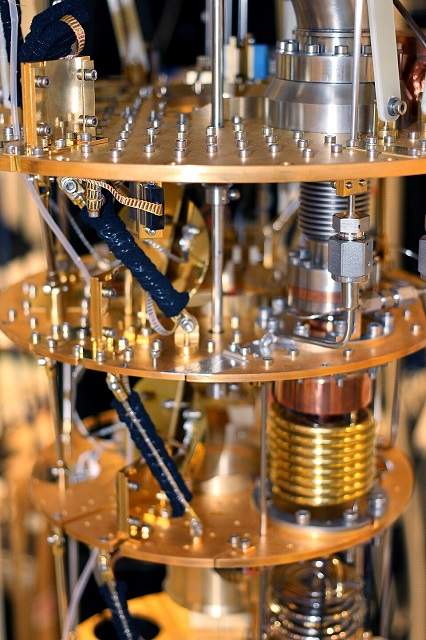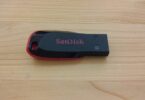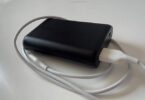Have you ever wondered how scientists cool devices to temperatures close to absolute zero? Welcome to the fascinating world of dilution refrigerators. Dilution refrigerators are one of the most advanced cooling technologies ever developed. These ultra-cold machines are critical for cutting-edge applications like quantum computing, superconductivity research, and low-temperature physics.
In this post, we will break down what dilution refrigerators are, how they work, and why they are indispensable in today’s high-tech labs. If you are a gadget enthusiast, a science buff, or simply curious about the world’s coldest tech, you are in for a chillingly cool read.
What Are Dilution Refrigerators?
A dilution refrigerator is a highly specialized cooling device used to reach extremely low temperatures. It is often in the Millikelvin range. MilliKelvin is just a fraction above absolute zero (-273.15°C). Traditional refrigerators rely on compressors or chemical refrigerants. However, these devices do not rely on compressors or chemical refrigerants. Instead, they use a clever process that exploits the quantum properties of helium isotopes—specifically, helium-3 and helium-4.
The core concept revolves around the dilution of helium-3 in helium-4. This dilution process of helium isotopes produces cooling as the two isotopes mix at cryogenic temperatures. This process allows scientists to achieve temperatures as low as 2 millikelvins. This extreme temperature makes dilution refrigerators one of the coldest operating machines on the planet.
They might not be something you will find in a kitchen or lab near you. These refrigerators are the backbone of many advanced scientific instruments.
Why Are They Important in Modern Technology?
Dilution refrigerators play a crucial role in modern science and technology. It works in areas where ultra-low temperatures are essential for accurate measurements and stable conditions.
Here is why they matter:
- Quantum Computing: Qubits are the basic units of quantum information. Qubits are extremely sensitive to thermal noise. Dilution refrigerators provide the stable low-temperature environment needed to keep qubits coherent and functional.
- Superconducting Circuits: At near-absolute-zero temperatures, certain materials exhibit superconductivity—where electrical resistance drops to zero. Dilution refrigerators allow researchers to study and develop superconducting devices without interference from heat.
- Low-Temperature Physics Research: From investigating exotic states of matter to exploring fundamental quantum phenomena, dilution refrigeration enables physicists to push the boundaries of knowledge.
- Scientific Instruments: Devices like scanning tunneling microscopes (STM) and SQUIDs (Superconducting Quantum Interference Devices) often require dilution cooling for precise measurements and imaging at the atomic level.
In short, without dilution refrigerators, many of today’s technological and scientific breakthroughs in quantum technologies would not be possible.
The Science Behind Dilution Refrigerators
Dilution refrigerators are not just fascinating pieces of engineering. Actually, they are grounded in the complex and captivating world of cryogenics and quantum physics. To truly appreciate how they work, we need to understand a few key scientific principles that make reaching millikelvin temperatures possible.
Understanding Cryogenics and Millikelvin Temperatures
Cryogenics is the study of the production and behavior of materials at extremely low temperatures. Those low temperatures are typically below -150°C (123 K). As temperatures approach absolute zero (0 K or -273.15°C), classical physics starts to give way to quantum mechanical effects.
One of the most intriguing milestones in cryogenics is reaching the millikelvin range. Millikelvin range is just thousandths of a degree above absolute zero. At these incredibly low temperatures:
- Atoms move extremely slowly.
- Thermal noise is minimized. That is making it easier to observe quantum behavior.
- Electrical resistance in certain materials can vanish completely (superconductivity).
But achieving these temperatures is not easy. This is where dilution refrigerators shine. They use an elegant method to create temperatures far colder than what traditional cryogenic liquids (like liquid helium at 4.2 K) can reach.
What Is a Dilution Process in Physics?
The heart of a dilution refrigerator is the dilution process. The dilution process exploits the unusual properties of helium-3 (³He) and helium-4 (⁴He). These two isotopes of helium behave differently at low temperatures due to their quantum mechanical nature:
- Helium-4 is a boson and becomes superfluid at 2.17 K.
- Helium-3 is a fermion. It does not condense easily—until it is mixed with helium-4.
When helium-3 is added to a bath of helium-4 at cryogenic temperatures, the helium-3 atoms naturally migrate to one side of a phase boundary. That migration is creating two layers:
- Concentrated phase (mostly helium-3)
- Dilute phase (a mixture of helium-3 and helium-4)
The cooling occurs when helium-3 atoms cross the boundary from the concentrated to the dilute phase. This transition absorbs heat. That absorption is creating a cooling effect.
This continuous dilution of helium-3 into the helium-4-rich phase allows the refrigerator to maintain temperatures as low as 2 millikelvins. This temperature is crucial for quantum experiments and ultra-sensitive measurements.
How Dilution Refrigerators Work
Dilution refrigerators may sound futuristic. However, their operation is based on a surprisingly elegant principle: cooling through controlled mixing of helium isotopes. Behind the scenes, they are a masterclass in precision engineering and quantum physics. Each component is working together to reach some of the coldest temperatures known to science.
Key Components and Their Roles
- Mixing Chamber
- It is the heart of the refrigerator. This is where the actual dilution process occurs—helium-3 mixes into helium-4. That is creating the cooling effect. It is the coldest point in the system.
- Still
- Located just above the mixing chamber. The still separates and recycles helium-3 vapor. It helps maintain the flow of helium-3 through the system. That is ensuring continuous operation.
- Heat Exchangers
- These are used to cool the incoming helium-3 before it reaches the mixing chamber. The clever design allows it to recover and use cold from the outgoing helium mixture efficiently.
- Condenser
- This component condenses helium gases into liquid form using a cryocooler or liquid helium bath. It is preparing them for recirculation.
- Pulse Tube or Cryocooler (in modern systems)
- In modern “dry” dilution refrigerators cryocoolers (like pulse tubes) are used instead of liquid helium to provide the initial stages of cooling. This eliminates the need for constant helium refills.
- Vacuum Insulation and Radiation Shields
- These prevent heat from leaking into the system. That allows it to maintain ultra-low temperatures over time.
The Cooling Mechanism: Mixing Helium-3 and Helium-4
The real magic happens in the mixing chamber. In which, the cooling process is driven by the quantum behavior of helium-3 and helium-4:
- At low temperatures, a phase separation naturally occurs: one phase is rich in helium-3 (concentrated phase). And the other is a diluted mix of helium-3 and helium-4 (dilute phase).
- When helium-3 atoms move from the concentrated phase into the dilute phase, the process absorbs heat—this is the key to cooling.
- By continuously pumping helium-3 across the boundary, the system maintains a steady cooling effect.
This cycle can drive the temperature down to as low as 2 millikelvins (0.002 K). This extreme temperature makes it ideal for quantum experiments that demand near-zero thermal noise.
Applications of Dilution Refrigerators
Dilution refrigerators are not just scientific curiosities. They are essential to some of the most groundbreaking technologies and experiments of our time. Their ability to maintain ultra-low temperatures makes them indispensable in fields ranging from quantum computing to medical imaging.
Quantum Computing and Superconducting Qubits
One of the most prominent applications of dilution refrigerators is in the field of quantum computing. In quantum processors, information is stored in qubits. They are incredibly sensitive to heat and environmental noise.
To ensure the stability and coherence of these superconducting qubits, they must be operated at temperatures near absolute zero. This is where dilution refrigerators come in:
- They provide a low-noise, ultra-cold environment for qubits to operate error-free.
- Major tech companies like Google, IBM, and Intel use dilution refrigeration systems in their quantum computing labs.
- Without dilution refrigeration, quantum error rates would skyrocket. And that can render these machines ineffective.
Particle Physics and Low-Temperature Experiments
Dilution refrigerators are also widely used in fundamental physics research. That is particularly useful in experiments that explore quantum phenomena and the behavior of matter under extreme conditions.
- In neutrino detection and dark matter experiments, scientists need to measure faint signals that would otherwise be drowned out by thermal noise.
- These refrigerators allow researchers to explore superfluidity, quantum entanglement, and exotic particles by providing a near-perfect thermal vacuum.
- Cryogenic detectors like bolometers rely on dilution refrigeration to track tiny energy changes at millikelvin temperatures.
Such experiments are helping us understand the origins of the universe, quantum gravity, and particle interactions at a fundamental level.
MRI and Advanced Medical Imaging
Traditional MRI machines do not use dilution refrigerators. However, next-generation imaging technologies and experimental MRI systems for small-scale or high-precision applications can benefit from ultra-cold temperatures.
- Some cutting-edge cryogenically cooled detectors used in medical research require dilution refrigeration for ultra-sensitive imaging.
- In preclinical studies, dilution refrigerators can enhance imaging resolution when tracking biological processes at the molecular level.
- As medical technology advances, the demand for quantum sensors and cryo-electronics in imaging is expected to grow. That can bring dilution refrigeration into the spotlight.
Challenges and Limitations
While dilution refrigerators are technological marvels, they are not without their drawbacks. Their use is typically confined to specialized labs and research environments. That is due to its significant operational demands and complexities. Here is a closer look at the key challenges involved.
Power Consumption and Operational Costs
Running a dilution refrigerator is not about reaching low temperatures. It is all about maintaining them consistently, and that comes with a high energy cost:
- Power-Hungry Components: Modern dilution refrigerators often use cryocoolers or pulse tube coolers. Those coolers require continuous electrical power to operate effectively.
- Helium-3 Is Expensive: Helium-3 is a rare isotope. Its limited supply makes it incredibly expensive. Even though it is recycled in the system, initial filling and losses add to operational costs.
- Maintenance Needs: These systems require careful calibration, regular maintenance, and often skilled technicians. That is adding further costs.
All of this makes dilution refrigeration a cost-prohibitive option for casual or small-scale use. It confines mostly to government labs, major universities, and high-budget private research centers.
Size, Noise, and System Complexity
Dilution refrigerators are not plug-and-play devices. They are massive, intricate machines that demand careful installation and ongoing monitoring:
- Bulky and Complex: These systems can stand several feet tall and take up substantial space in a lab. They include multiple thermal stages, pumps, shielding layers, and vacuum lines.
- Mechanical Noise: Especially in systems using cryocoolers, vibrations, and acoustic noise can interfere with sensitive experiments and require extra damping mechanisms.
- Complex Integration: Incorporating a dilution refrigerator into a broader experimental setup (like a quantum computer) can involve complex wiring, shielding, and control software. All of those add to the system’s fragility and learning curve.
Despite their cooling prowess, dilution refrigerators remain non-trivial to operate. They are tools for specialists—not for general consumer or commercial use.
Conclusion
Why Dilution Refrigerators Are Critical to Tech Advancements
Dilution refrigerators may not sit on a desk like a laptop or fit in your pocket like a smartphone, but their impact on modern technology is profound. These ultra-low-temperature systems are the silent enablers behind the quantum revolution, providing the cryogenic backbone for:
- Quantum computers could one day outperform classical systems in medicine, encryption, and AI.
- Particle physics experiments that expand our understanding of the universe’s fundamental structure.
- Cryogenic sensors and advanced imaging tools could revolutionize healthcare and scientific diagnostics.
In essence, without dilution refrigerators, much of the cutting-edge research and innovation in quantum and low-temperature physics would grind to a halt.
Final Thoughts: Bridging Physics and Gadgets
At first glance, dilution refrigerators might seem worlds apart from the tech we use every day. But as quantum technologies mature, they will begin to shape the next generation of gadgets and devices. In addition, it shapes quantum processors embedded in AI systems and more such as hyper-sensitive sensors in healthcare.
These cryogenic systems are one of the best tools for physicists. They are gateways to the future of tech. Understanding how they work, and why they matter, helps us appreciate the deep science powering tomorrow’s innovations.
So next time you read about quantum supremacy or low-noise superconducting circuits, remember: there is likely a dilution refrigerator humming quietly in the background, making it all possible.
Dilution Refrigerators FAQ
What is a dilution refrigerator used for?
A dilution refrigerator is used to achieve ultra-low temperatures for experiments in quantum computing, particle physics, and cryogenic research.
How cold can a dilution refrigerator get?
Dilution refrigerators can reach temperatures as low as 2 millikelvin (0.002 K), close to absolute zero.
Why is helium-3 used in dilution refrigerators?
Helium-3 is used because it enables the dilution process that removes heat from the system when it mixes with helium-4. This process creates a cooling effect at extremely low temperatures.
Are dilution refrigerators used in everyday technology?
Not directly. They are mainly used in advanced research and tech development, especially in quantum labs. However, the technologies they enable may shape future consumer gadgets.
What are the main limitations of dilution refrigerators?
They are expensive, complex, large, and require high operational power and specialist handling.
What is a boson?
A boson is a type of fundamental particle that follows Bose-Einstein statistics and does not obey the Pauli exclusion principle. This means multiple bosons can occupy the same quantum state. Examples include photons, gluons, and the Higgs boson. In cryogenics and low-temperature physics, bosons like helium-4 atoms are key players because they can form a superfluid, flowing without resistance.
What is a fermion?
A fermion is a fundamental particle that follows Fermi-Dirac statistics and obeys the Pauli Exclusion Principle. That means no two fermions can occupy the same quantum state simultaneously. Examples include electrons, protons, neutrons, and helium-3 atoms. In dilution refrigerators, helium-3 (a fermion) is crucial for achieving ultra-low temperatures through its quantum mixing behavior with helium-4.
What is a thermal vacuum?
A thermal vacuum is a controlled environment where both temperature and pressure are extremely low. It is often close to absolute zero and a vacuum state. This setup eliminates heat transfer through convection and conduction. It allows scientists to simulate the conditions of outer space or test how materials and quantum systems behave in near-zero thermal energy environments— like inside a dilution refrigerator.
What are Bose-Einstein statistics?
Bose-Einstein statistics describe how bosons (particles like photons or helium-4 atoms) behave at very low temperatures. Unlike ordinary particles, bosons can occupy the same quantum state. Quantum state allows them to collectively act as one unified quantum system. This behavior is key in the formation of superfluids and Bose-Einstein condensates. They play vital roles in cryogenics and quantum research.
What is the Pauli exclusion principle?
The Pauli exclusion principle is a rule in quantum mechanics stating that no two fermions (like electrons, protons, or helium-3 atoms) can occupy the same quantum state at the same time. This principle explains the structure of atoms and is also why helium-3 behaves differently from helium-4. That makes it essential in the dilution process used in ultra-cold refrigeration.
What is a superfluid?
A superfluid is a special state of matter that occurs at extremely low temperatures where a liquid (like helium-4) can flow without viscosity or resistance. This means it can climb walls, flow through tiny pores, and even remain still while its container rotates. Superfluidity is a quantum phenomenon, made possible by Bose-Einstein statistics. It is a key concept in low-temperature physics and dilution refrigeration.







